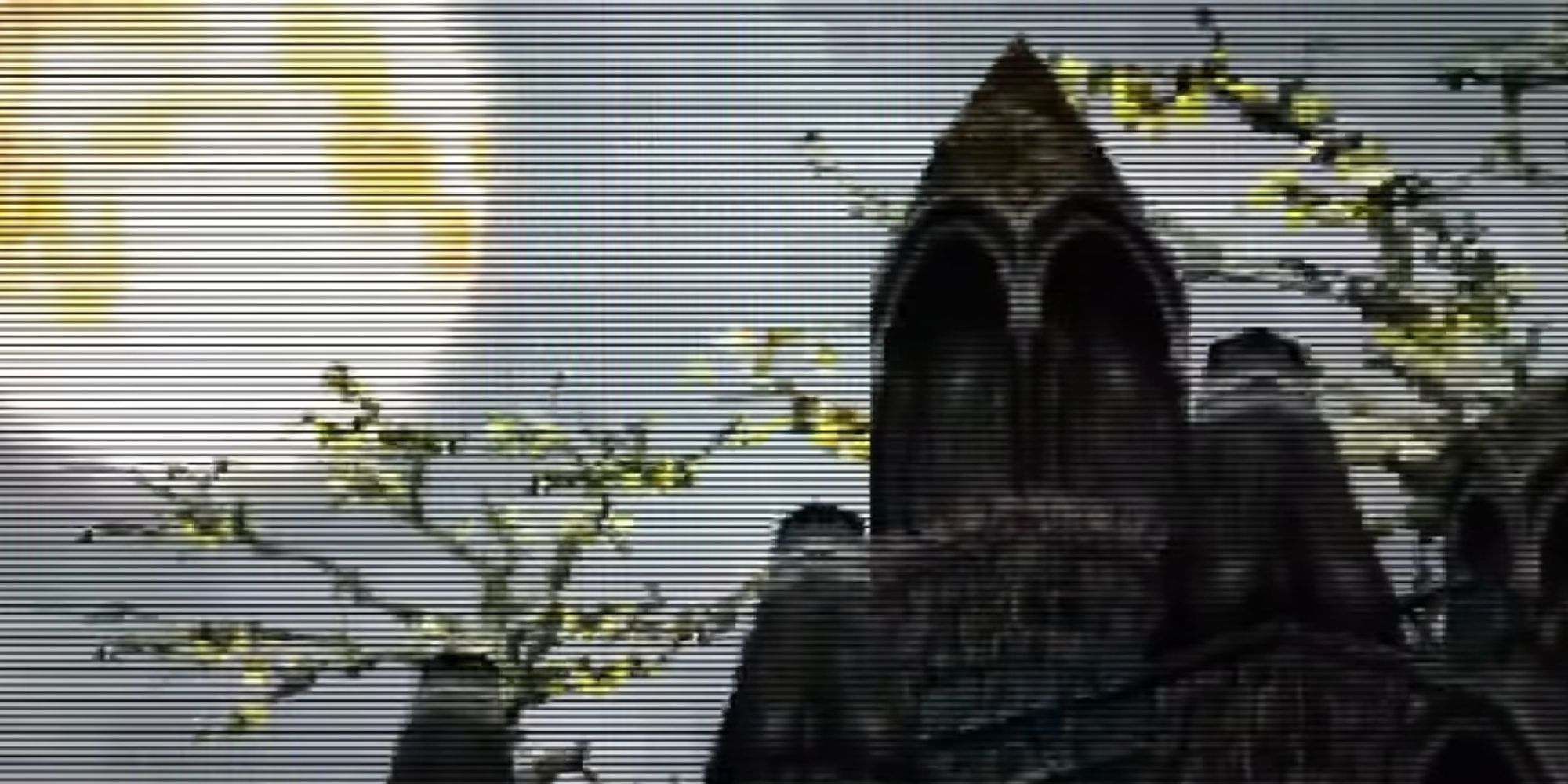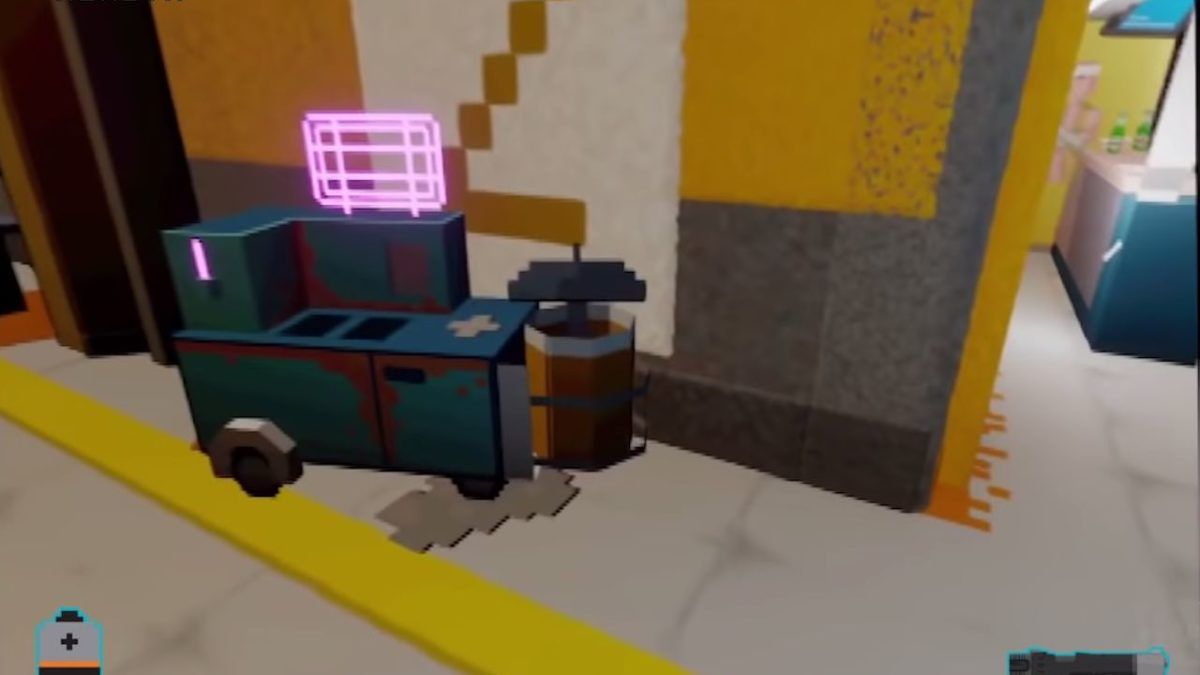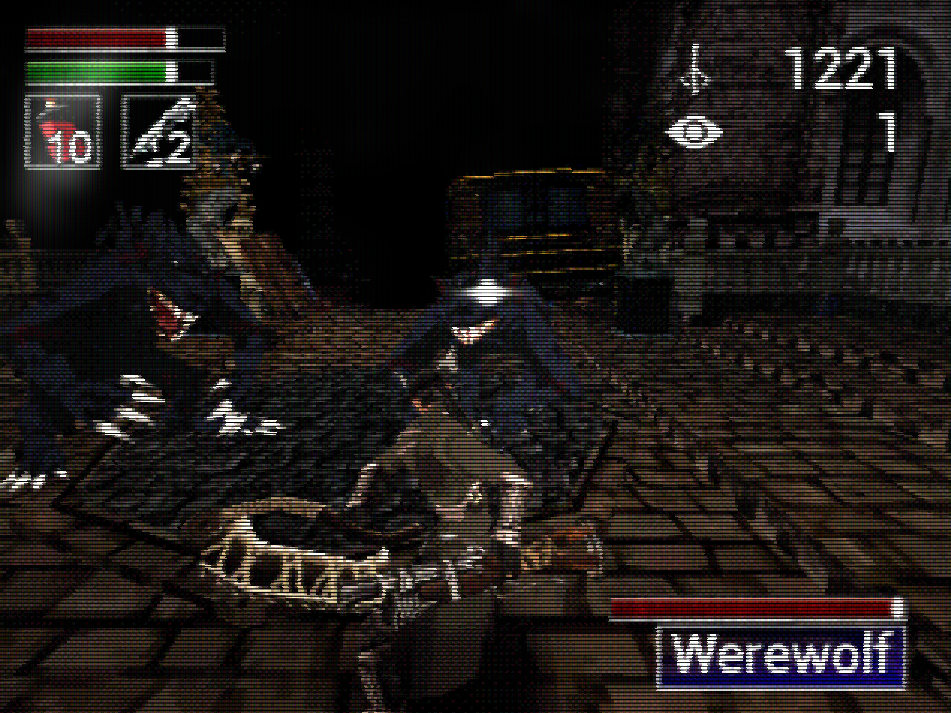The ornate, gothic structures of Bloodborne are now finally available to experience on the platform, having been meticulously replicated as a PlayStation fan demake called Bloodborne PSX. And to no one’s surprise, it’s also a rendition that translates well to the rough, heavily pixelated aesthetics of the PlayStation 1, with the demake adding more layers to the already oppressive atmosphere of the original. Skulking around the towers among the ghoulish streets of Yharnam in Bloodborne still carries the sort of grandiose but abominable beauty that Bloodborne has been known for.
There are also a few tweaks that make the fan game feel more true to the dated PlayStation 1 platform, such as a tanked framerate when using the Flamesprayer, a cumbersome menu UI that’s right in the vein of PS1 games, and even a mock memory card save system. Bloodborne PSX even has the tell-tale sign of a CRT TV glare at a not-so-discreet corner of its screen.
Demakes are a mark of the technological legacies behind the video games medium, and emblematic of the industry’s unyielding penchant for nostalgia. Players are understandably fascinated by renditions of modern games that could have developed in the past, to see how these platforms’ limitations will fare against today’s much more technically intensive designs. And with demakes like Bloodborne PSX, it’s also a burgeoning video game genre that’s coming on its own, a type of thought experiment, even a fun exercise to reimagine some of the biggest names in games—the most ‘next gen’ of titles—as experiences that might have been released years or decades ago on older platforms. Bloodborne PSX, of course, is one of the more hotly anticipated demakes in recent months, with the game having been developed over the course of 13 months. Other games, such as the Cyberpunk 1997 (a demake of Cyberpunk 2077) and a Persona 4 Game Boy demake, are also in the works, even if they may not eventually pan out as a standalone, full-fledged game like Bloodborne PSX.
Rather than just serving as homages for retro gaming, demakes also give developers the space to create new games that tap into the limitations of these dated platforms, which can elevate and entangle both the mundane and sense of discomfort in their games due to the platform’s somewhat uncanny look: the blockish graphics, and the limited range of colour palettes and sounds. Then there’s the rise of original, indie horror games developed in the mould of PlayStation 1 graphics; there’s an entire bundle of indie games known as the Haunted PS1 Demo Disc, as well as a litany of other games like Paratopic and Night of the Consumers, which thrive on the PS1’s unpolished graphics to conjure nightmarish, seemingly paranormal scenes.
But beyond just these technical specs, some games even incorporate the themes, conversations and headlines prevalent during the console’s era, adding a new dimension to the game’s unsettling reality. One such title is the pixel horror game Faith, with the game moulded in the aesthetic of a title made for the Atari 2600 console, while evoking the satanic panic of the 1980s with a tale about occultism, corrupt priests and defiled churches. Faith is sparse in terms of its limited spectrum of colours and the lack of details in its graphics, which made traversing its environments, particularly against the stark blackness of its background, extremely unsettling, as if you’re anticipating some unspeakable terror to suddenly materialise from the darkness. What’s more, Faith looks like a lost bootleg game you’ve discovered under dusty layers of garbage from a yard sale, akin to the found footage blend of horror films, which makes the game feel even more macabre—and rendering its horror incredibly effective.
More than just recapturing or introducing a visual style of the past to new audiences, demakes are also antithetical to the industry’s eternal chase for the next generation of bigger, more bombastic games. By stripping away the technological progress of the medium and embracing older, even analogue means of developing and creating games, developers of game demakes are also leveraging the lexicon of these so-called retro platforms to distill modern games right down to their pure artistic merits. Think of this as another set of developer tools or lexicon at their disposal; now new games can be translated into alternative forms of creative expressions that may sometimes be inconceivable even in the past—a special sort of foresight that also celebrates the all-encompassing creativity of the medium, across the various eras of video games.



